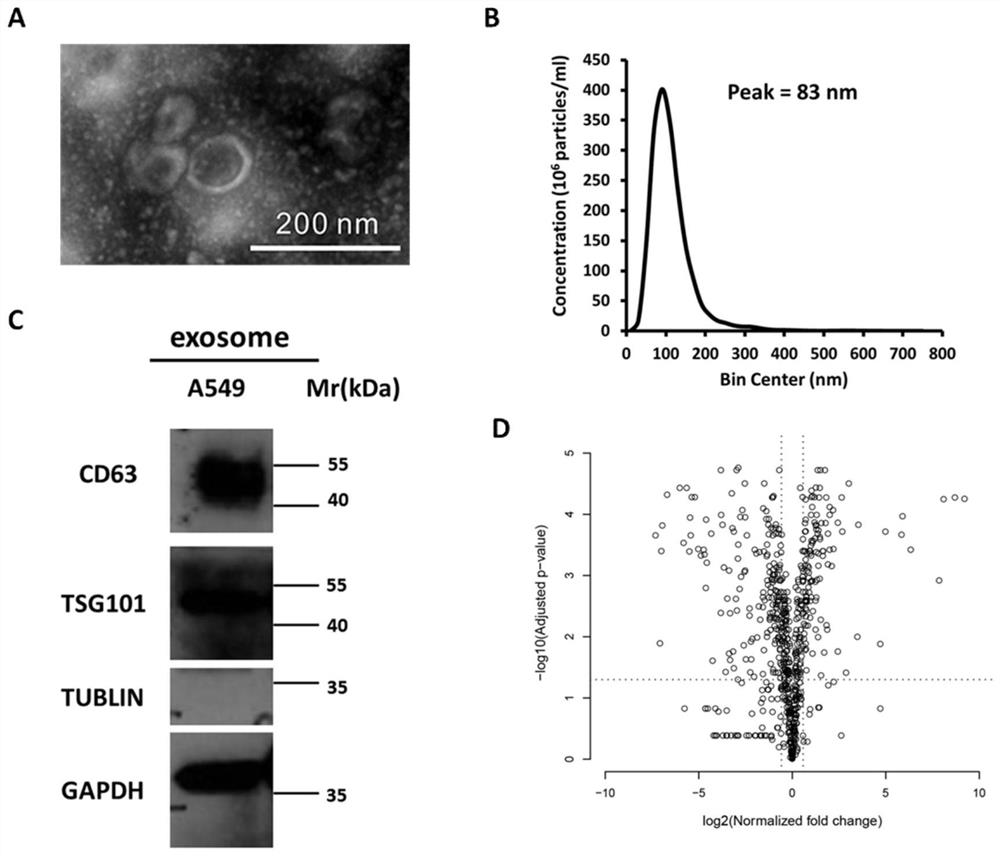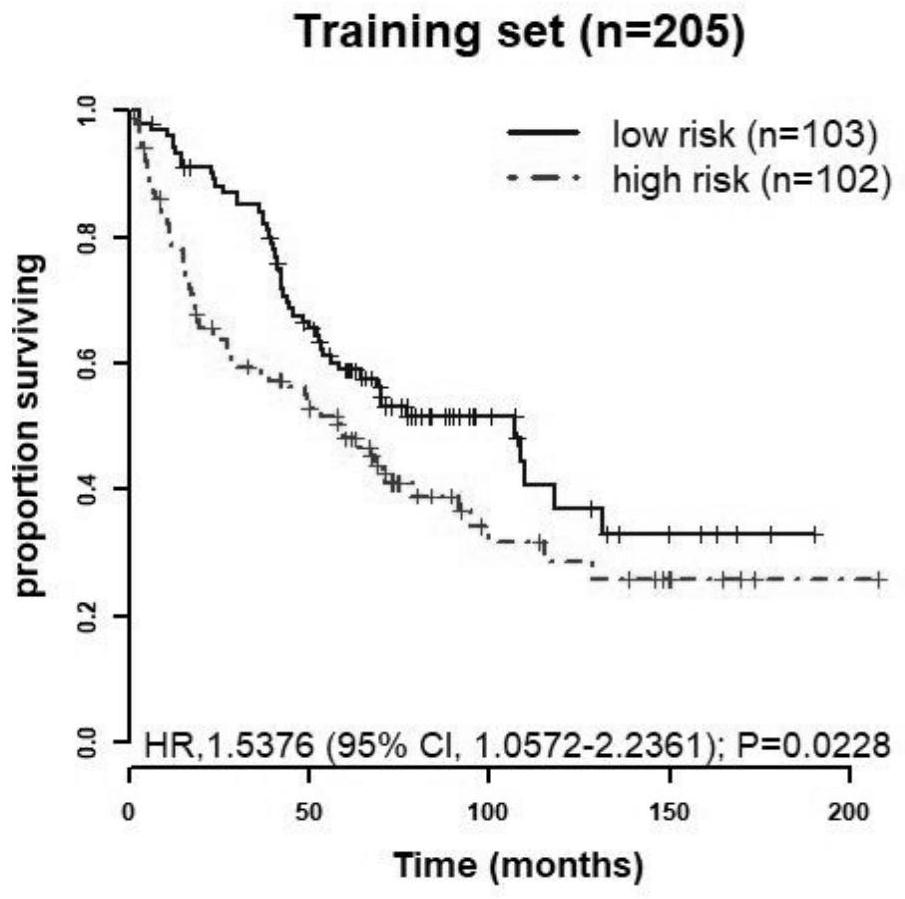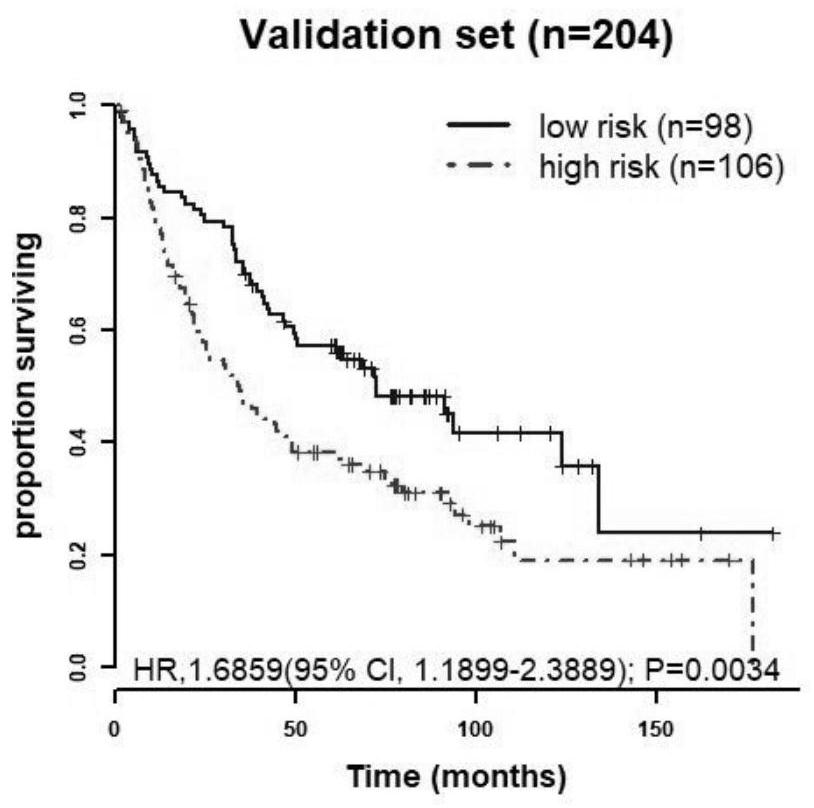Molecular markers related to the prognosis of non-small cell lung cancer and their application
A non-small cell lung cancer, molecular marker technology, applied in biochemical equipment and methods, microbial determination/inspection, DNA/RNA fragments, etc., can solve the problems of low cure rate, difficult judgment, and survival rate of less than 15% , to achieve the effect of universal applicability
- Summary
- Abstract
- Description
- Claims
- Application Information
AI Technical Summary
Problems solved by technology
Method used
Image
Examples
Embodiment 1
[0081] Example 1 Lung cancer exosomes transform fibroblasts and affect the protein level secreted to the extracellular space
[0082] Extraction of exosomes secreted by non-small cell lung cancer: Collect the serum-free medium supernatant of cultured lung cancer cell lines. Centrifuge at 3000g for 15 minutes at 4°C, and take the supernatant and place it in a new centrifuge tube. Centrifuge at 16,000g for 1 hour at 4°C, take the supernatant and place it in a new centrifuge tube. Centrifuge at 120,000g for 2 hours at 4°C and discard the supernatant. Resuspend the pellet, ie exosomes, in PBS. Electron microscope identification of the collected exosome structure: take 10ul of the resuspension, drop it on the carbon-containing copper grid, add 2% uranyl acetate after drying, let it stand for 5 minutes, rinse with PBS for 2 minutes, absorb the excess liquid with filter paper, and repeat Wash three times and let dry. Under the 80kV voltage transmission electron microscope, the ex...
Embodiment 2
[0086] Example 2 Establishing a Prognostic Model for Non-small Cell Lung Cancer
[0087] In order to establish a reliable non-small cell lung cancer prognosis model, the present invention collects data sets related to non-small cell lung cancer with survival information. The specific sample information of the dataset is shown in Table 1 and Table 2.
[0088] Table 1. Information of patients with non-small cell lung cancer related to overall survival
[0089]
[0090]
[0091] Table 2. Information of patients with non-small cell lung cancer related to recurrence-free survival
[0092]
[0093]
[0094] The experimental platform of the data set is Affymetrix U133Plus2.0 chip. The gene expression value of each data set is normalized by Z value, that is, (gene expression value - the average value of the gene expression value in the data set) / (the standard deviation of the gene expression value in the data set) ("-" represents minus sign, " / " represents the division ...
Embodiment 3
[0115] Example 3 Application of non-small cell lung cancer prognosis model
[0116] The non-small cell lung cancer prognosis model obtained in the training set obtained in Example 2 is applied to a verification set, three independent test sets related to overall survival and four independent test sets related to recurrence-free survival. Patient survival risk and disease recurrence risk prediction.
[0117]Take the non-small cell lung cancer prognosis model composed of the above five probes to predict the survival rate of the data set related to the overall survival rate as an example. According to the prognosis model, the risk score of each patient in the relevant data set is obtained, and the risk score of the patient is greater than the Patients with a risk score cutoff value corresponding to the prognostic model are classified as high-risk patients, and patients whose risk score is less than the risk score cutoff value corresponding to the gene combination model are classi...
PUM
| Property | Measurement | Unit |
|---|---|---|
| diameter | aaaaa | aaaaa |
Abstract
Description
Claims
Application Information
 Login to View More
Login to View More - R&D
- Intellectual Property
- Life Sciences
- Materials
- Tech Scout
- Unparalleled Data Quality
- Higher Quality Content
- 60% Fewer Hallucinations
Browse by: Latest US Patents, China's latest patents, Technical Efficacy Thesaurus, Application Domain, Technology Topic, Popular Technical Reports.
© 2025 PatSnap. All rights reserved.Legal|Privacy policy|Modern Slavery Act Transparency Statement|Sitemap|About US| Contact US: help@patsnap.com



